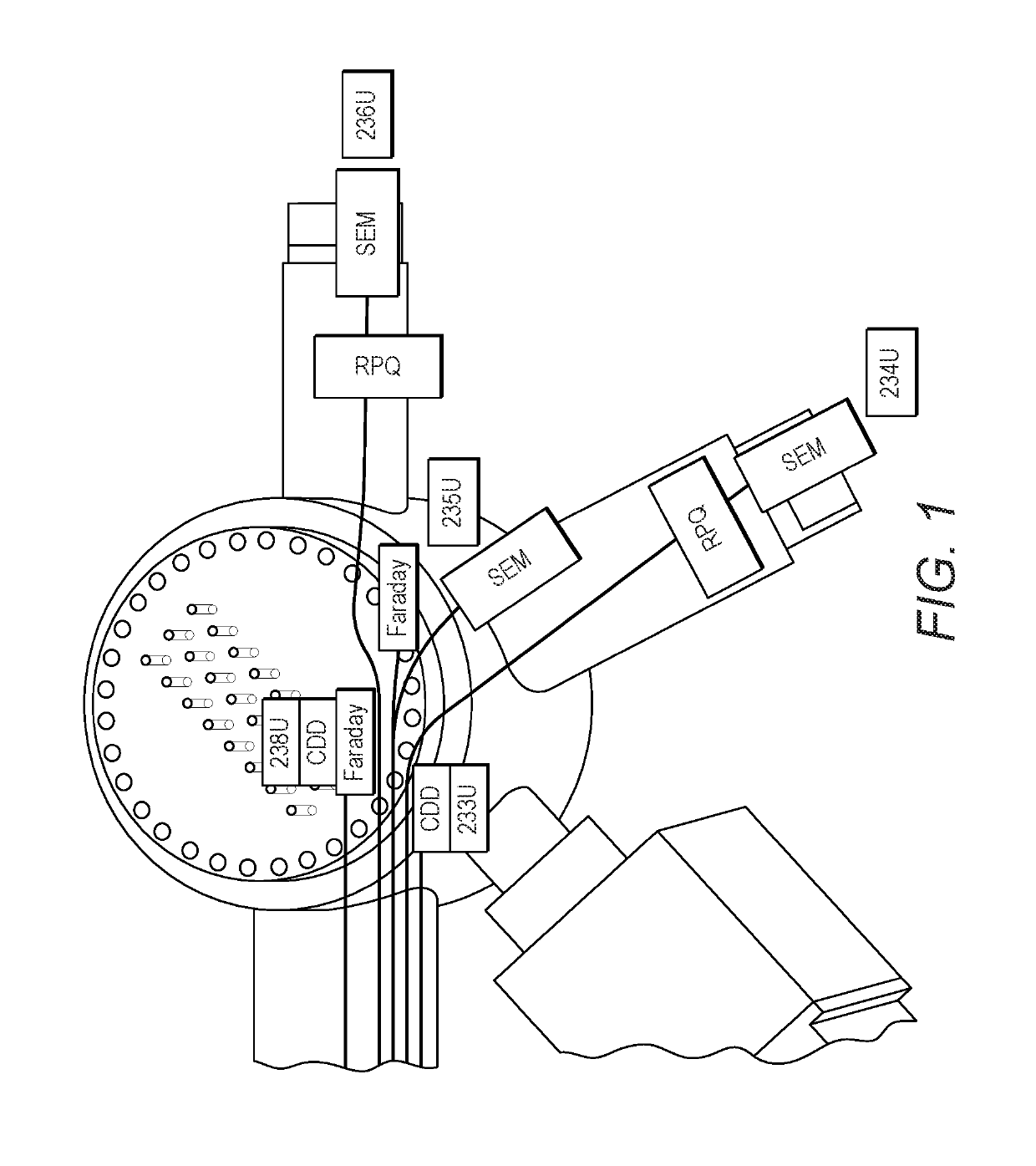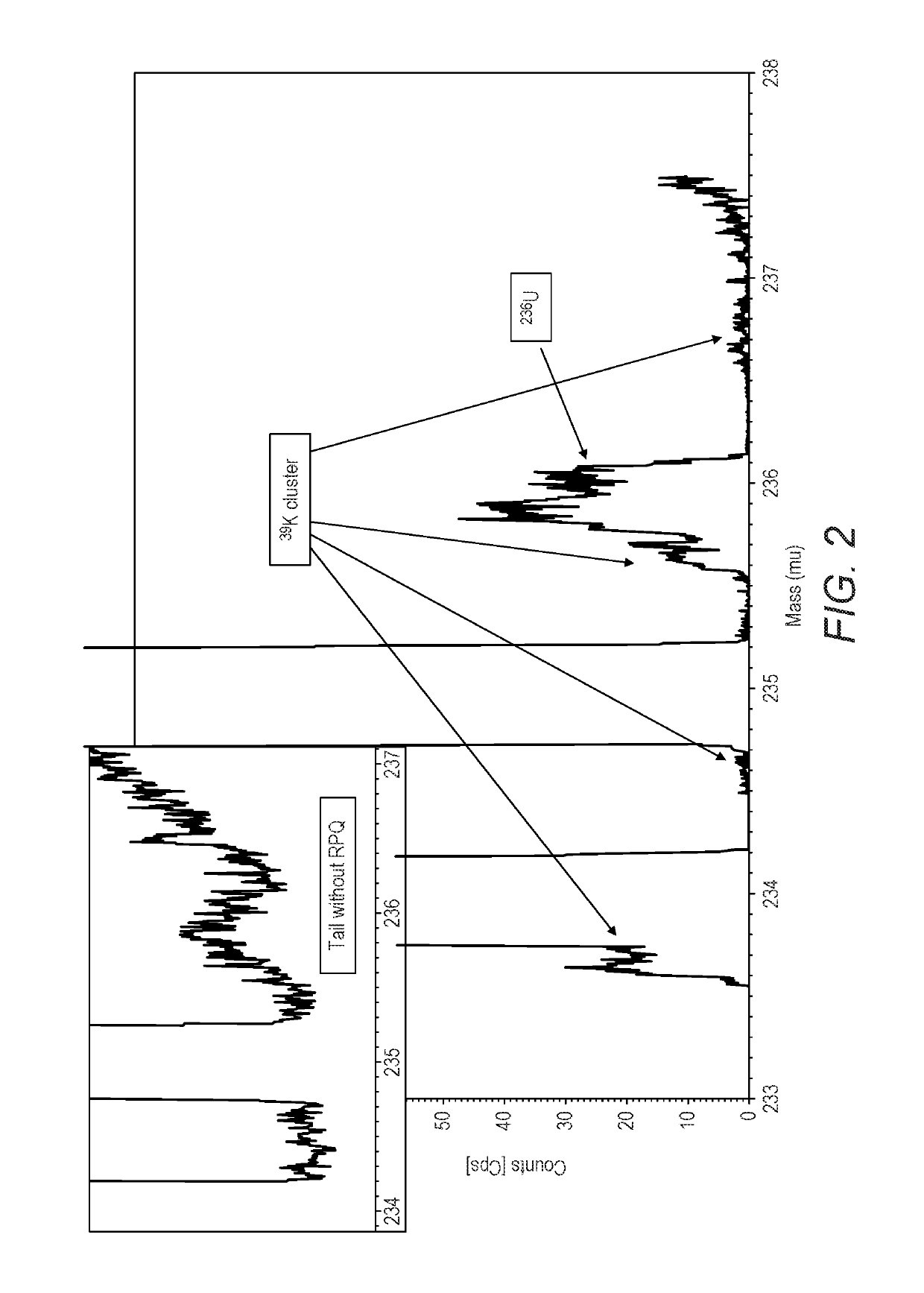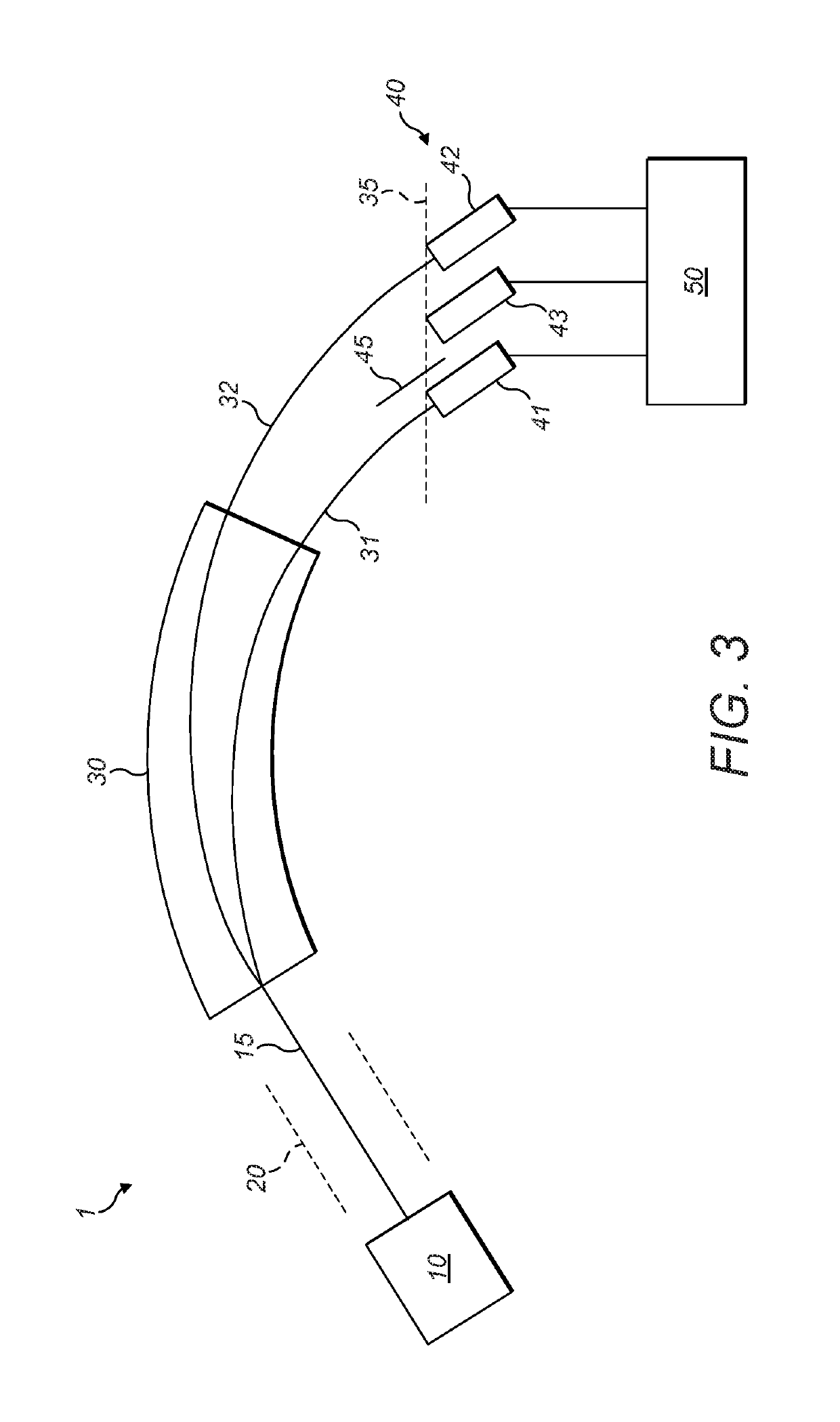Dynamic range improvement for isotope ratio mass spectrometry
a mass spectrometry and dynamic range technology, applied in the field of mass spectrometers, controllers of mass spectrometers and methods of mass spectrometry, can solve the problems of limiting the flexibility of the detector array to allow, and additional scattered background, so as to reduce the overall scattered background significantly.
- Summary
- Abstract
- Description
- Claims
- Application Information
AI Technical Summary
Benefits of technology
Problems solved by technology
Method used
Image
Examples
Embodiment Construction
[0026]As noted above, it is proposed to use an additional detector or several additional detectors to measure the background during the analysis. Referring first to FIG. 2, there is shown a schematic illustration of a mass spectrometer 1. The mass spectrometer 1 comprises: an ion source 10; ion optics 20; a mass-to-charge dispersive element 30; an ion detection arrangement 40; and a processor 50. The ion optics 20 may comprise one or more optics selected from: an ion lens, an ion guide and a collision cell. The mass-to-charge dispersive element 30 is a magnetic sector in this embodiment. The ion detection arrangement 40 is in the form of a collector array and comprises: a first main beam detector 41; a second main beam detector 42; a background level detector 43; and a shielding plate 45. The first 41 and second 42 main beam detectors and the background level detector 43 are positioned at the focal plane 35 of the magnetic sector 30.
[0027]The ion source 10 generates an ion beam 15, ...
PUM
| Property | Measurement | Unit |
|---|---|---|
| thick | aaaaa | aaaaa |
| size | aaaaa | aaaaa |
| size | aaaaa | aaaaa |
Abstract
Description
Claims
Application Information
 Login to View More
Login to View More - R&D
- Intellectual Property
- Life Sciences
- Materials
- Tech Scout
- Unparalleled Data Quality
- Higher Quality Content
- 60% Fewer Hallucinations
Browse by: Latest US Patents, China's latest patents, Technical Efficacy Thesaurus, Application Domain, Technology Topic, Popular Technical Reports.
© 2025 PatSnap. All rights reserved.Legal|Privacy policy|Modern Slavery Act Transparency Statement|Sitemap|About US| Contact US: help@patsnap.com



